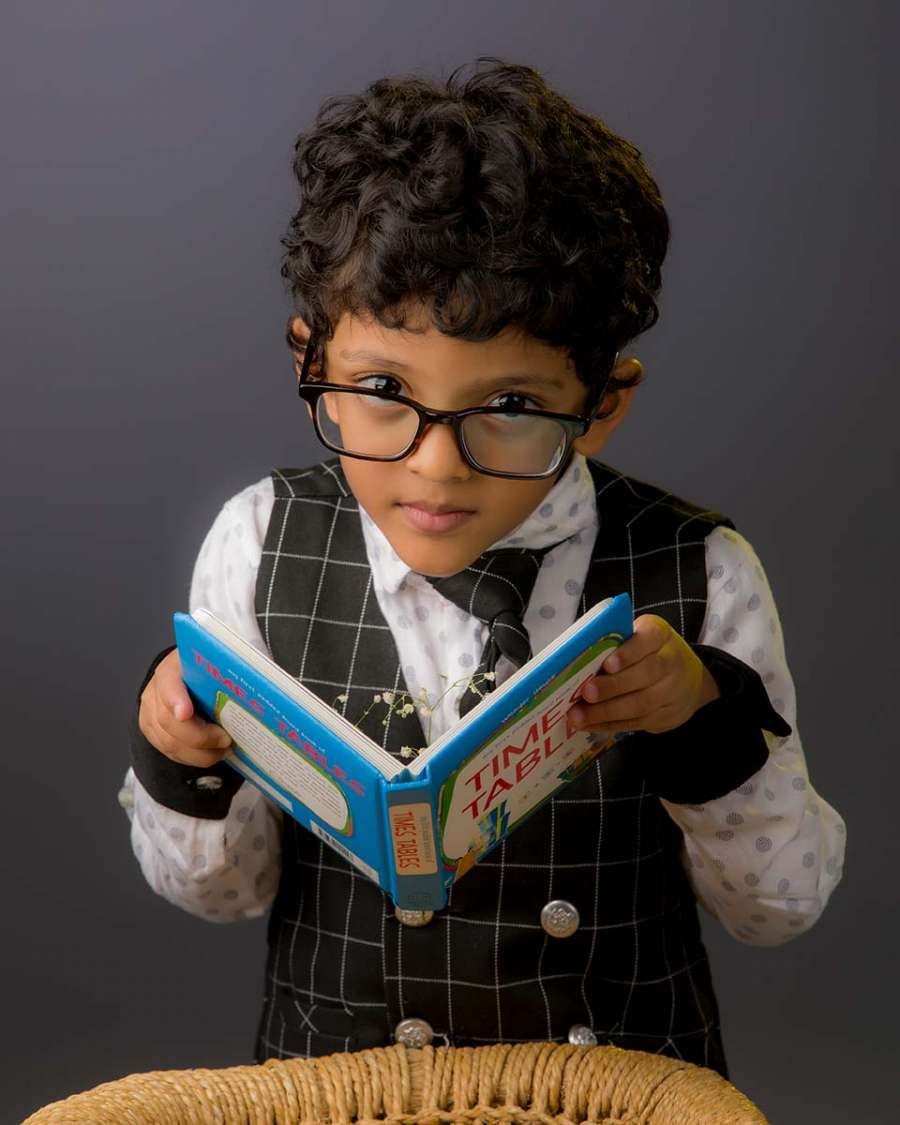1. Involve the Child from the Start
Instead of telling them what to do, involve them right from the planning stage itself.
Invite them into the process with simple choices.
Instead of:
“Sit here.”
Try:
“Do you want to sit on the chair or stand like a superhero?”
Instead of:
“Wear this.”
Try:
“Do you like the blue shirt or the red one?”
Kids love having power. When they choose, they commit.
Mini story: I once asked a little girl where we should start. She pointed at a random corner and said, “There!” I said, “Great idea!” and walked her there. Two minutes later, I got the space to ask, “Will you like this (showing her a quick look on my camera).”
Because I respected her choice first, she happily listened later. In short, you are building a partnership/collaborative effort.
2. Turn Posing into Play (No Commands!)
Children don’t pose—they pretend, play, copy, and imagine.
So instead of rigid instructions, I use playful prompts like:
“Can you show me your cute cute smile pleaseee?”
“oooh!! how cute you look sitting like that!”
“Should Teddy sit on your lap or on your head?”
“Can you show me how you hug your toy?”
“Do you want to try this cool jump?”
It feels like a game, not a task. And the expressions? 100% real.
Remember to be a kid at this play, and plan your steps ahead (this is what professional photographers learn over time and master interacting/playing with the kids)
3. Use Positive Reinforcement (It Works Like Magic)
When a child feels proud, they’ll do anything again.
Instead of correcting, I celebrate:
“Wow, you did that all by yourself!”
“That was PERFECT—can we do it again?”
“You’re so fast! I almost missed it!”
“That smile is my favourite!”
And immediately… they repeat it with even more excitement.
4. Keep Distractions (Especially Phones) Away
One of the biggest challenges isn’t the child—it’s the phone in the parent’s hand.
The moment a parent takes out the mobile / recording from the side, the child wants it. Attention is gone.
Before the shoot, I gently ask:
“Let’s keep mobiles out of sight so your child stays fully engaged. They look at you for cues—if you’re involved and smiling, they’ll do the same!”
Replace the phone with:
Laughter
Clapping
Singing
Playing along
Connection beats technology every time.
5. Bring Their Favourite Toy (It’s More Than a Prop)
A beloved toy isn’t just a cute accessory—it’s COMFORT, identity, and storytelling.
I often ask:
“What do you want to tell Teddy?”
“Can your car go fast or SUPER fast?”
“Should Bunny sit with you or fly in the sky?”
“Can you show me how you play with / talk with _____?”
Give time and allow them to forget about the camera and start being themselves.
Those are the moments worth capturing.
6. Let Them Show Off Their New Skills
Kids LOVE proving how “big” they are. Let them!
“Can you jump higher than me?”
“Show me your newest dance move!”
“How fast can you run to the tree and back?”
“Can you balance on one foot?”
They beam with pride—and I capture pure joy in motion.
7. Turn the Shoot into a Mini Adventure
When a session feels like a game, cooperation naturally happens.
Some fun themes you can use:
Explorer looking for treasure
Superhero on a mission
Freeze/unfreeze game
“Let’s pretend the floor is lava!”
“Can you tiptoe like a sneaky cat?”
The more imagination, the better the expressions.
8. Parents: Cheerleaders, Not Directors
Parents are incredible helpers… when they support rather than instruct.
What works best:
Stand behind or beside me
Laugh, clap, encourage
Let me lead with playful prompts
Trust the process
If a parent says, “Smile! Look here! No, do this!” the child shuts down.
If the parent says, “Wow! You’re doing great!” the child lights up.
9. Keep Sessions Short & Flexible
Children have limited attention—and changing energy.
That’s why I plan several mini activities instead of one long setup.
When a child is in the mood, I follow their lead.
When they’re tired, we pause or change the game.
Flexibility > Perfection
10. End on a Positive Note
The final feeling shapes the memory.
At the end, I often:
Show them a photo: “Look! That’s YOU!”
Give a high-five
Let them click a photo with my help
Say, “You were amazing today!”
They leave proud and excited—often asking, “Can we do it again?”
Young children don’t resist photoshoots because they’re difficult.
They resist because they want independence—and we often take it away.
But when we invite them to participate…
When we use choices, praise, play, imagination, and patience…
They don’t just cooperate—they shine.
The best kid photos don’t come from perfect poses.
They come from letting them be fully, wonderfully themselves.
And that’s the magic worth capturing.


